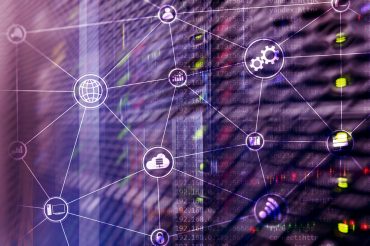
With fraud and financial crime on the rise, the banking sector needs to be equipped with the best emerging technologies to resist such attacks.
The current COVID-19 pandemic has resulted in a lot of discomfiture in the banking world. Being an industry that is heavily dependent on manual work, it took a considerable amount of time to acclimatize to the digital world. Of the many factors they had to consider while walking headfirst into a completely digital model of business was security. Fighting fraud and financial crime was essential.
The banking industry, which is considered the backbone of the economy, needs to keep rolling irrespective of the crisis. Other growing sectors depend on them to extend a hand and pull them out of such uncertain crises. Implementation of the digital format will lead to the storage of a huge amount of financial data and track records of diverse entities and customers in digital format. This consolidated, wide range of data will constantly be at peril from fraudsters and cybercriminals.
See also: How COVID-19 Is Accelerating the Digital Transformation of Retail Banking
What crimes influence the banking industry?
The banking sector is majorly affected by man-in-the-middle attacks. Comprising employees and other stakeholders in the internal network, these financial organizations can expect a probability of leak of crucial information, which in turn becomes a catastrophic situation. These compromised employees also partake in the creation of backdoors, which further increases the chance of a cyberattack on the institution. Denial of service attacks also happen in large numbers, and online customers get directed to unauthorized and malicious websites, which, in turn, try to access their data.
With the current banks and financial institutions working on digital platforms, there is a high risk of exposure to web application attacks and different forms of SQL and XML injection attacks. Compromising the login credentials is one of the most important cybercrimes threatening the banking industry today, leading to unauthorized takeover. Additionally, social engineering and phishing attacks are now carried out even by the employees who already have access to the bank’s network. Hence, traffic monitoring is done to analyze vulnerabilities and attempt intrusions.
Apart from cybercrimes, money laundering, identity thefts, embezzlements, tax evasion, forgery, counterfeiting, and more are also terrorizing the banking industry. The term “terrorist financing” has spiked in recent years. The criminals take advantage of the loopholes of the regulatory environment. Under this, the fraudsters launder money through illegal networks under the banner of shell companies. Foreign banks and cross-border networks are used to avoid tax payments, and this shift of unauthorized money results in a hole in the country’s economy.
Statistics on attacks reveal appalling numbers when it comes to identity thefts and stolen bank account information. Such attacks are generally a result of social engineering, phishing, and the use of honeypots.
Role of technology in combating fraud and crimes
Technology, especially in the form of artificial intelligence, blockchain, and machine learning, is a boon in combating frauds and cybercrimes. The learning methodology or algorithms are majorly useful to predict these attacks by looking out for patterns that raise suspicion. Moreover, these algorithms help to watch out for illicit transfers and alerts the system to a wide category of cyberattacks. These algorithms can analyze varied patterns and predict all combinations of attacks, thus, helping financial organizations to be prepared with a risk mitigation and management strategy.
AI algorithms are used to map applications to credit cards and detect illicit purchases or shady transfers of money. The algorithm can track fraudsters with the help of their bank details and records the money trail exposing the criminals. Artificial Intelligence is used to monitor credit and debit activities on accounts and alert in case of an unnatural account balance or spending records. Both Intrusion Detection System and Intrusion Prevention Systems are now automated using AI, which has led to a vast decrease in vulnerabilities regarding human errors.
Blink tests, biometric scanning, and AI-operated identification software are now being used by banks during customer onboarding to verify the customers’ details and to ensure that there are no identity thefts. This can help reduce fraud. During customer onboarding, these algorithms analyze the financial records, spending and investment rates, and check for involvement with illegal activities or connections with offshore banks. With this, the system gives an analysis report based on which the bank makes a decision of whether it is safe to onboard the customer or not.
The machine learning algorithms are used by the banks to detect frauds and transaction patterns from fishy IP addresses and their corresponding network details. They are also used to analyze a gigantic amount of data that banks generate, find out correlations between them and the vulnerable points. Artificial Intelligence is also used to scan networks and test for vulnerabilities to prevent cybercrimes. Automated solutions are generated to check ports and backdoors in the network of banks.
According to PWC’s Global Economic Crime and Fraud Survey of 2020, an average of six frauds were reported per company. The United States lost $42 billion in frauds. With such alarming numbers, the banking sector needs to be equipped with the best emerging technologies to resist such attacks.




























